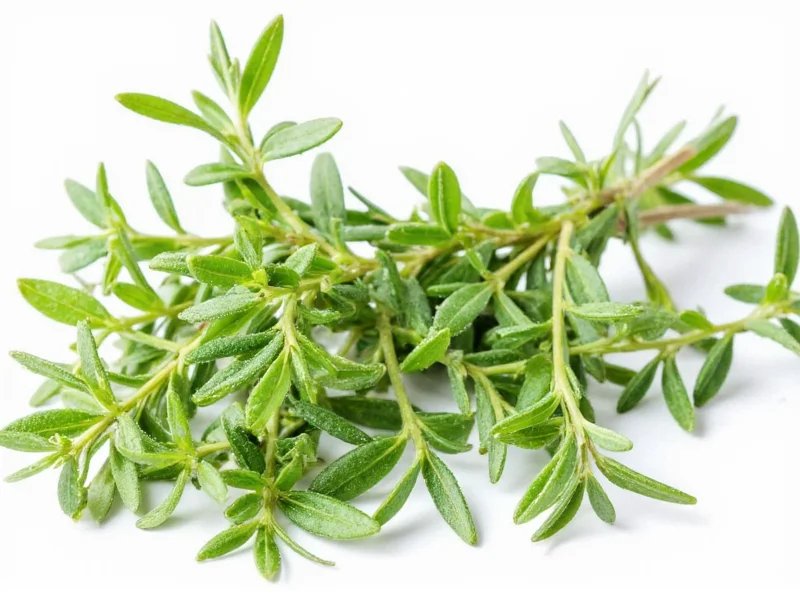Marjoram brings a delicate, sweet flavor with subtle citrus notes to dishes, making it a staple in Mediterranean and European cuisines. Unlike its more pungent cousin oregano, marjoram offers a milder, sweeter profile that enhances rather than overwhelms ingredients. Understanding how to use marjoram properly can transform ordinary meals into restaurant-quality creations.
Understanding Marjoram Varieties
When learning how to use marjoram in cooking, recognizing the difference between fresh and dried forms is essential. Fresh marjoram has a more delicate flavor that dissipates with prolonged heat, while dried marjoram concentrates its flavor compounds, making it more potent per volume.
| Marjoram Type | Flavor Profile | Best Used In | Shelf Life |
|---|---|---|---|
| Fresh Marjoram | Sweet, floral, with citrus notes | Finishing dishes, salads, dressings | 1-2 weeks refrigerated |
| Dried Marjoram | More concentrated, earthy | Slow-cooked dishes, rubs, sauces | 1-2 years stored properly |
When to Add Marjoram During Cooking
Timing matters significantly when using marjoram. For fresh marjoram, add it during the last 5-10 minutes of cooking to preserve its delicate flavor compounds. Dried marjoram benefits from longer cooking times, allowing its flavor to fully develop in dishes like stews, soups, and braises. This distinction represents one of the most important aspects of how to cook with marjoram effectively.
Consider these specific applications when determining how to use marjoram in your cooking:
- Meat dishes: Marjoram complements lamb, pork, chicken, and veal exceptionally well. Create a simple herb rub with marjoram, garlic, and olive oil for roasted meats.
- Vegetable preparations: Toss fresh marjoram with roasted root vegetables or add to tomato-based vegetable sauces.
- Soups and stews: Add dried marjoram early in the cooking process to allow flavors to meld.
- Egg dishes: Sprinkle fresh marjoram into omelets or frittatas just before serving.
- Salad dressings: Combine fresh marjoram with olive oil, lemon juice, and Dijon mustard.
Marjoram Measurement Guide
One common challenge when learning how to use marjoram is proper measurement conversion. The general rule is:
- 1 tablespoon fresh marjoram = 1 teaspoon dried marjoram
- When substituting marjoram for oregano, use 1.5 times the amount of marjoram
- For delicate dishes, start with 1/4 teaspoon dried marjoram per serving and adjust to taste
Remember that dried herbs are more concentrated, so when using dried marjoram in place of fresh, you need less quantity. This marjoram measurement guide ensures your dishes achieve perfect seasoning without overpowering other ingredients.
Perfect Pairings for Marjoram
Marjoram works beautifully with specific ingredients that enhance its unique flavor profile. Understanding these pairings represents a key element of how to use marjoram successfully:
- Citrus fruits: Lemon and orange complement marjoram's natural citrus notes
- Garlic and onions: These aromatics create a flavorful base for marjoram
- Tomatoes: Marjoram enhances tomato-based sauces and stews
- Olive oil: The perfect carrier for marjoram's essential oils
- Other herbs: Pairs well with thyme, rosemary, and sage (use sparingly)
Storing Marjoram for Maximum Freshness
Proper storage extends marjoram's shelf life and preserves its flavor. For fresh marjoram, treat it like cut flowers: trim the stems and place in a glass with an inch of water, then cover loosely with a plastic bag and refrigerate. Change the water every two days. Dried marjoram maintains best quality when stored in an airtight container away from light and heat.
Marjoram Substitutions
If you're wondering how to use marjoram when you don't have it available, consider these substitutions:
- Oregano (use 2/3 the amount, as it's stronger)
- Thyme (use equal amount, but flavor profile differs)
- A blend of thyme and oregano (1:1 ratio)
- For dried marjoram substitute: 1 teaspoon dried oregano = 1.5 teaspoons dried marjoram
Remember that while substitutions work in a pinch, they won't replicate marjoram's distinctive sweet, floral notes. Learning proper marjoram substitution techniques ensures your dishes maintain balance even when the preferred herb isn't available.
Simple Recipe Applications
Here are three straightforward ways to incorporate marjoram into everyday cooking:
- Marjoram Roasted Vegetables: Toss carrots, potatoes, and onions with 2 tablespoons olive oil, 1 tablespoon fresh marjoram (or 1 teaspoon dried), salt, and pepper. Roast at 400°F for 30-40 minutes.
- Herb-Infused Olive Oil: Combine 1 cup olive oil with 3 tablespoons fresh marjoram, 2 crushed garlic cloves, and lemon zest. Let steep for 24 hours before using for dressings or dipping bread.
- Marjoram Chicken Rub: Mix 1 tablespoon dried marjoram, 1 teaspoon garlic powder, 1 teaspoon onion powder, 1/2 teaspoon black pepper, and 1 teaspoon salt. Rub on chicken before roasting.











 浙公网安备
33010002000092号
浙公网安备
33010002000092号 浙B2-20120091-4
浙B2-20120091-4